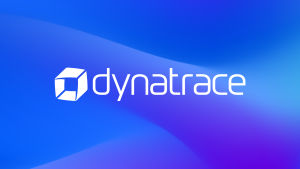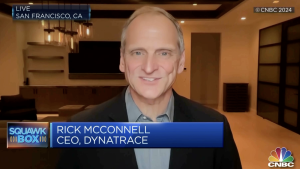Our partners at T-Systems delivered a knockout story about autonomous driving at this year’s Perform Europe in Barcelona, in no small part because of how real and imminent self-driving cars are. And, I’d be remiss if I didn’t spread the word on just what Joerg Tischler, T-Systems’ Connected Mobility VP of Customer Solutions, shared about how T-Systems and Dynatrace are working together to map the future of autonomous driving.

Self-driving cars: today and tomorrow
What do we need to make today’s autonomous cars work? There are really just two ingredients: the car itself and a gas station for it to stop at.
But, tomorrow is a different story. Because when self-driving cars become the norm, the environment they’ll have to live in will be completely different from today’s.
The cars need sensors that gather information from cameras, GPS systems, sonar devices. The car then uses that data to create a map around itself of everything and everyone nearby, so that it can plan to move around them accordingly.
Today, that map only reaches out about 50 meters – not nearly far enough. The car can’t see what’s around the corner past that range, so even though it’s technically self-driving, its visibility is no different from what a human driver could see.
Here’s where things get complicated.

More self-driving cars + more connected devices = more complex environments
For self-driving cars to move fast and free, they need more devices like road side boxes, stop signs and traffic lights that are all equipped with IoT, parking and speed sensors to gather data from.
As Joerg outlined, these devices and sensors create a whole roadside infrastructure that provide the car with continuous, real-time data about everyone and everything happening around it. This data is processed in the cloud and fed back into the vehicle, for optimized performance.
The problem? The devices, clouds, sensors, data flows and cars on the road necessary to make this work creates an exponential level of complexity. We’re talking about multiple data sets, with multiple communication standards, that all need to interoperate together, so the cars on the road can communicate and interact with each other and their surroundings, safely and securely.

Bringing together IoT variables with Dynatrace
That’s where Dynatrace comes in.
As Joerg explained, the T-Systems approach depends on Dynatrace. Our monitoring solution enables T-Systems to bring all of these different components together, providing end-to-end visibility in a way that eliminates performance risks for self-driving cars.
It’s not just about installing a single agent in the car or a single agent into the smart traffic light; it’s about the Dynatrace OneAgent monitoring all of these data sources and feeding back performance insights for a whole new level of transparency.
Joerg put it best: T-Systems and Dynatrace, together, make for a strong partnership that is making safe, efficient and optimized autonomous driving a reality. With our all-in-one, AI-powered, fully-automated, enterprise-grade monitoring solution, T-Systems is gleaning new insights from the autonomous driving IoT landscape to create a better, more reliable future for self-driving cars.
This one blog post can’t do the whole session justice. Do yourself a favor and register for the highlights of Perform Europe 2018 in Barcelona to check out Joerg’s full presentation and many more great sessions from the show.





Looking for answers?
Start a new discussion or ask for help in our Q&A forum.
Go to forum